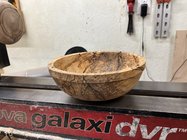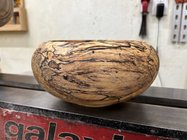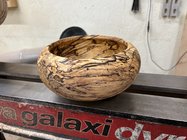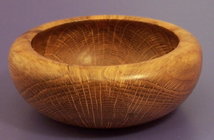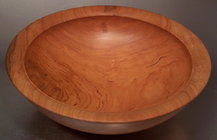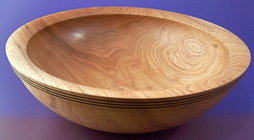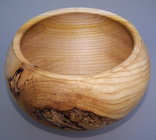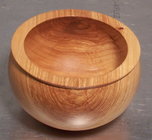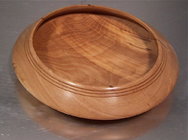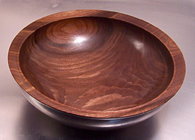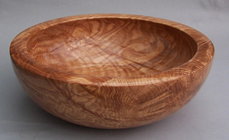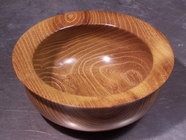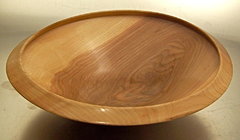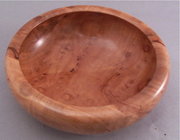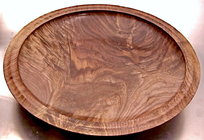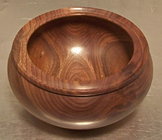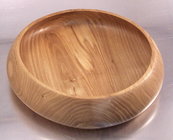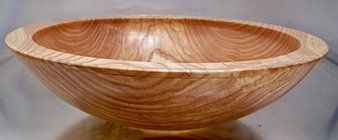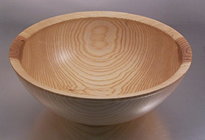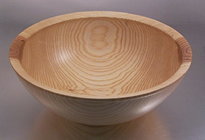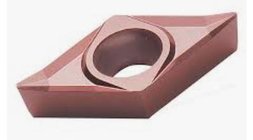As for tear out, it varies a lot from one piece of wood to the next, and even pieces from the same tree. Softer woods tend to tear more than harder woods, most of the time. Kind of the same thing for what actually causes tear out. Most of the time it is from going against the grain. This happens twice each revolution in bowl/side grain orientation. The fibers are unsupported when going against the grain. Scraping cuts will tear out more than shear cuts. Think of it as going over speed bumps in your car. Hit the speed bump square on and you can get a pretty good bounce. Hit the speed bump at a 45 degree angel, and the bump is much less. Hit it at a higher shear angle and the bump is far less. Applied to woodturning, a scraper is like hitting the speed bump head on. A high angle shear cut is like hitting the speed bump at an angle. What happens is that the cutting edge, either bevel rubbing or shear scrape, has a much easier time getting under the fibers and lifting the wood as it cuts. Scraping tools are great for roughing out bowls, but leave a lot of tear out. They do a fair job of sweeping across the bottom of a bowl because you are not cutting down through the fibers, but across them. If you come up the transition and onto the walls, you will get more tear out. A NRS (negative rake scraper) is still a scraper, and while it takes less of a bite you still get tear out and again, this can vary hugely from one wood to another. This is why a gouge is preferred for a finish cut or in my case I prefer a shear scrape. I do have one video dedicated to that topic. Check out some of the Brian Havens videos. He uses plastic straws to demo wood grain orientation. Excellent idea!
As for heavy tools, a big NO from me, and I could manage a 75 pound tool if I wanted. I had a couple of the shot filled handles, and didn't like them. Not good for a full day of turning, just too much weight. As for bouncing, I think that is correct. This would be because, as far as I am concerned, as you cut the outside or inside of the bowl, there are 4 zones with grain running in different directions. You go with, against, with and against the grain each revolution. The cutting tool will react a bit differently when cutting in each zone. This is where the light touch works best. "The bevel should rub the wood, but the wood shouldn't know it." The harder you clamp down on your tool to eliminate that bounce, the more bounce you get. This is another reason I use a shear scrape for my finish cut. You are essentially nibbling the high spots off till you get close to perfectly round.
Another cause of bouncing is having your tool rest too far away from the wood you are cutting. Think of a flexible ruler. With minimal overhang off the edge of a table, pretty much no twang. The farther it extends off the edge of the table, the more twang you get.
robo hippy

